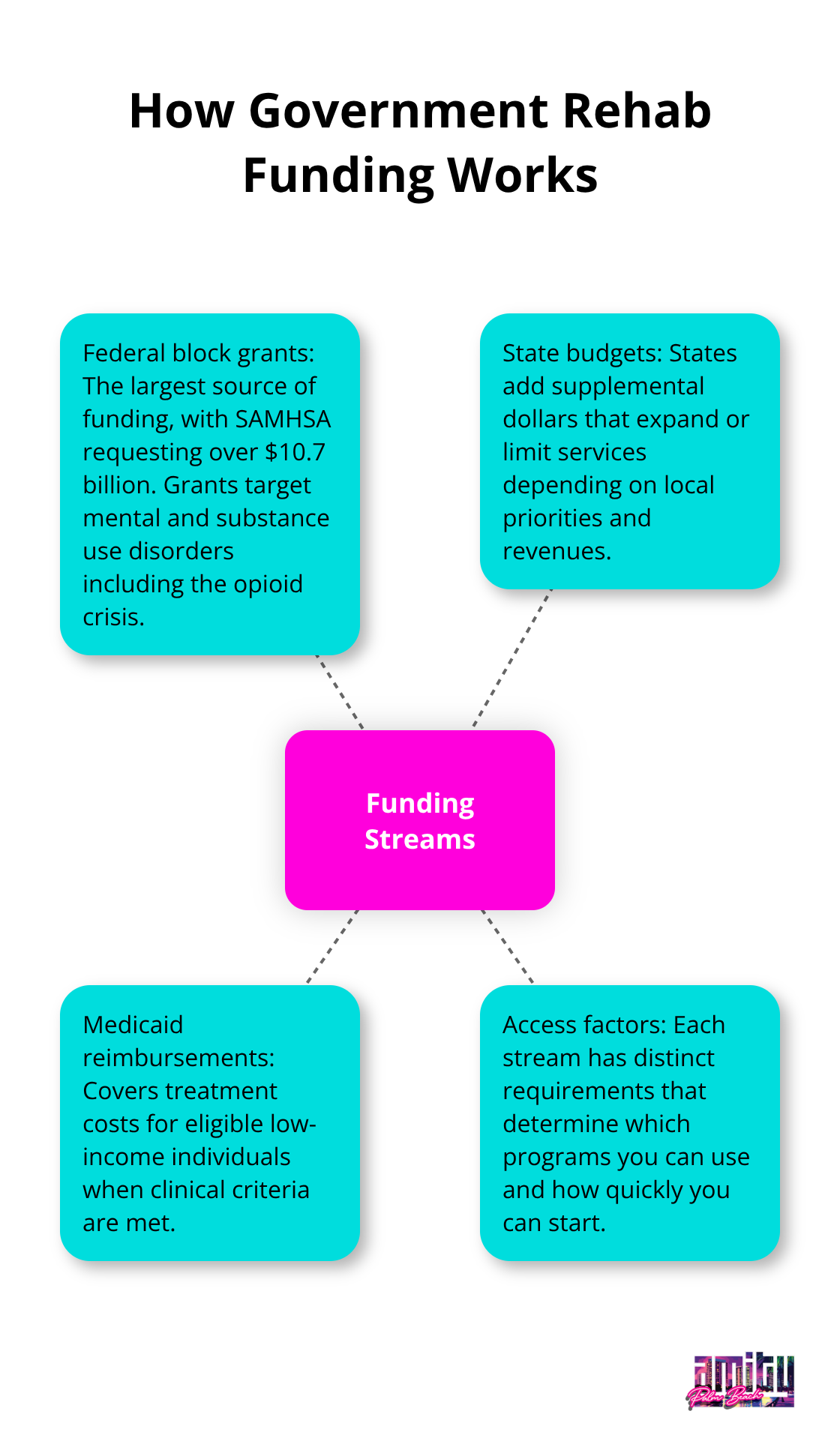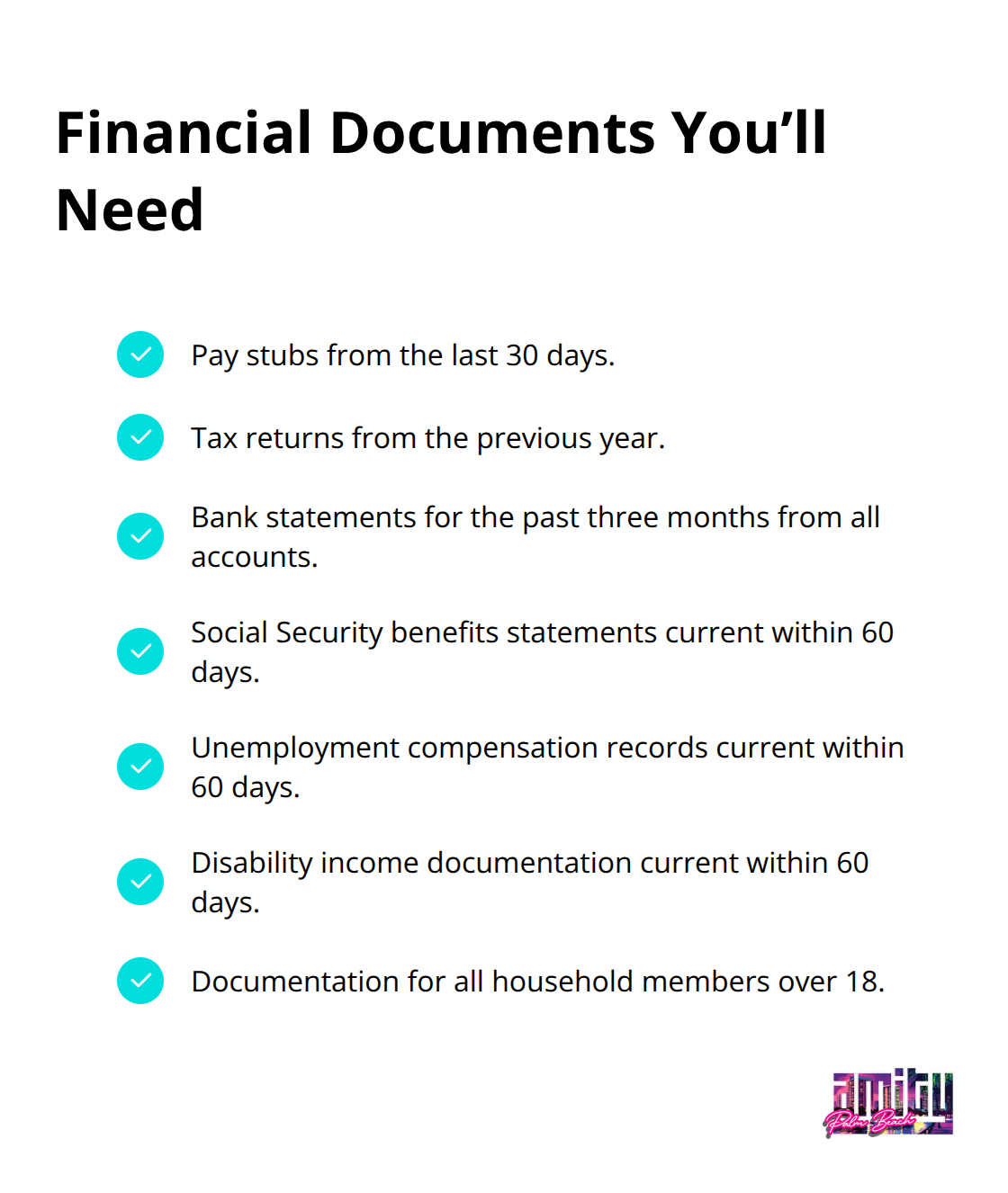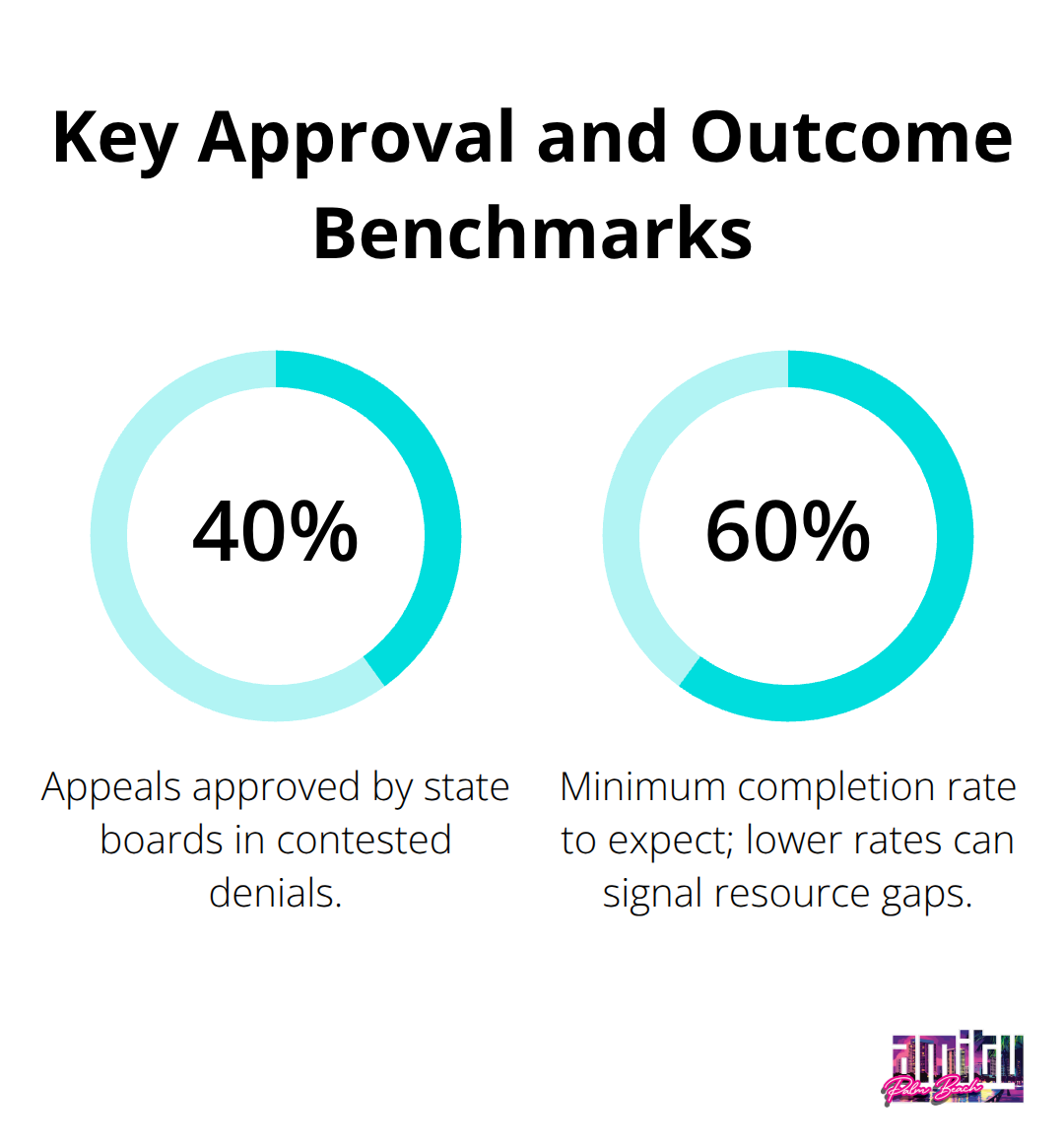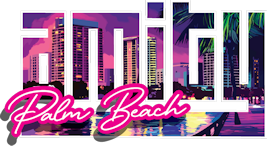Government funded drug rehab programs offer hope for people who can’t afford private treatment. These programs provide essential addiction treatment services at little to no cost.
We at Amity Palm Beach understand that navigating the application process can feel overwhelming. This guide breaks down everything you need to know about accessing these vital resources.
What Government Funding Options Are Available?
Government-funded rehab programs operate through three primary funding streams that directly impact your access to treatment. Federal block grants provide the largest source, with SAMHSA requesting over $10.7 billion for mental and substance use disorders including the opioid crisis. State budgets supplement these funds, while Medicaid reimbursements cover treatment costs for eligible low-income individuals. Each funding source has specific requirements that determine which programs you can access.

Federal vs State Program Differences
Federal programs like those funded through SAMHSA maintain consistent eligibility standards across all states and require proof of income below 200% of the federal poverty level. State-funded programs vary dramatically by location, with some states like California offering comprehensive services while others provide minimal coverage. States with higher substance use rates often receive additional federal allocations, which creates geographic disparities in available slots. Understanding these funding differences helps you identify which programs may be available in your area.
Income Thresholds and Documentation Requirements
Most government-funded programs require household income within the $31,200 to $124,800 range for a family of four, based on current federal guidelines. You must provide recent pay stubs, tax returns, and bank statements during application. Priority placement goes to pregnant women, injection drug users, and individuals with co-occurring mental health disorders according to federal guidelines. Programs funded through different streams have varying documentation requirements, with Medicaid-funded slots requiring additional medical assessments that can add 2-4 weeks to the approval process.
Application Timeline and Processing
The application process typically takes 1-3 weeks for initial review, though complex cases may require additional time. State agencies process applications in order of receipt, with priority categories moving ahead in the queue. Most programs require you to complete intake assessments within 72 hours of approval notification or risk losing your slot to the next applicant. Understanding these timelines helps you prepare for the next step: gathering all required documentation and paperwork for your specific situation, including exploring comprehensive addiction treatment options.
What Documents Do You Need to Apply?
Financial Documentation Requirements
State agencies verify your eligibility within 48 hours of submission using specific financial documents you must provide. You need your most recent pay stubs from the last 30 days, complete tax returns from the previous year, and bank statements that cover the past three months from all accounts. Social Security benefits statements, unemployment compensation records, and disability income documentation must be current within 60 days of application.

SAMHSA’s discretionary grant programs support substance use disorder activities, and incomplete financial documentation remains a common issue in applications. You must include documentation for all household members over 18 (even if they don’t use substances), as total household income determines your eligibility thresholds.
Application Processing and Wait List Management
State-funded programs maintain wait lists that average 45-90 days, with some high-demand areas extending to six months. You should submit applications to multiple programs simultaneously to increase your chances of faster placement. California processes applications within 14 days while Texas averages 21 days for initial review. Contact programs weekly to maintain active status on wait lists, as many facilities remove inactive applicants after 30 days of no contact. Priority placement categories can reduce wait times significantly – pregnant women typically receive placement within 48 hours, while injection drug users move to expedited review status.
Appeals Process for Denied Applications
Government-funded rehab applications can face initial denials, most commonly for income documentation issues or missing medical assessments. MHPAEA ensures that mental health and substance use disorder benefits are no more restrictive than medical benefits. You must file appeals within 30 days of denial notification to preserve your application date and position. State appeals boards review cases within 45 days and approve roughly 40% of contested denials. You should resubmit corrected documentation immediately rather than start new applications, as this maintains your original submission date for wait list position.

Once you complete your application and documentation process, the next step involves researching and evaluating the quality of available programs to find the best fit for your specific addiction treatment needs.
How Do You Find Quality Government Programs?
Research Accreditation and Licensing Status
Government-funded programs must hold state licensing and Joint Commission accreditation to operate legally, but these basic requirements don’t guarantee quality care. The Commission on Accreditation of Rehabilitation Facilities signals that a facility consistently meets high patient care, safety, and organizational excellence standards. Programs with CARF accreditation demonstrate measurable outcomes and follow evidence-based practices. Check your state’s licensing board website for violation records and complaint histories before you apply. Programs that maintain multiple accreditations typically offer better clinical oversight and staff training. State agencies often publish annual quality reports that include readmission rates and completion statistics for each funded facility.
Evaluate Treatment Methods and Success Metrics
State-funded programs that use medication-assisted treatment include effective, FDA-approved medications that can help people stop or reduce opioid use. Look for programs that offer buprenorphine, methadone, or naltrexone as part of their standard protocol rather than optional add-ons. Programs should provide specific completion rates for your substance of choice and demographic group during intake interviews. Facilities that track patients for 12 months post-treatment demonstrate commitment to long-term outcomes. Programs with completion rates below 60% often lack adequate staffing or clinical resources. Ask for written outcome data during your facility tour, as quality programs readily share their performance metrics.
Ask Direct Questions About Program Operations
Contact programs directly to assess their clinical approach and daily structure before you accept placement. Ask about staff-to-patient ratios during group therapy sessions, as effective programs maintain 1:8 ratios or better. Programs should provide specific details about their detox protocols, length of stay policies, and discharge planning processes. Quality facilities offer family therapy components and have established relationships with sober living facilities for post-treatment housing. Programs that cannot provide clear answers about their treatment model or refuse facility tours should be avoided regardless of wait times. When evaluating options, consider researching addiction treatment to understand what quality standards to expect from government-funded alternatives.
Final Thoughts
Government funded drug rehab programs require systematic preparation and persistent action. Collect your financial documentation, including pay stubs, tax returns, and bank statements from the past three months. Submit applications to multiple programs at once to reduce wait times, as demand often exceeds capacity by 300% in high-need areas.
When government programs reach capacity, alternative funding options exist. Medicaid covers treatment costs for eligible individuals, while Medicare provides coverage for those over 65. The Affordable Care Act requires private insurance companies to cover substance use disorder treatment (making private facilities more accessible than before).
We at Amity Palm Beach accept most major insurance plans and offer flexible private pay options to bridge the gap between need and availability. Our team provides medically supervised detox, residential treatment, and co-occurring disorder support. Contact Amity Palm Beach today for a free confidential assessment to explore your treatment options while you navigate government program applications.


